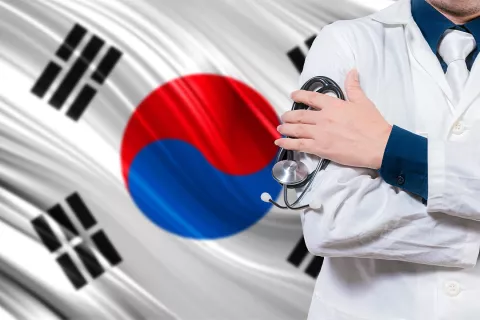
Navigating through the regulatory landscape in South Korea can be challenging, especially when integrating Medical Device Single Audit Program (MDSAP).
This blog dives into the details into the intricacies of medical device registration to ensure regulatory compliance, the importance of maintaining a robust QMS , classification of medical device and to streamline the Quality management system (QMS), facilitated by MDSAP.
Medical device registration and Medical Device Single Audit Program (MDSAP) in South Korea, how important and closely linked are they?
To register their medical device in the market, a medical device manufacturer must adhere to a series of steps that include appointing a registration officer, submitting detailed documentation, and undergoing a thorough review and evaluation by the competent authorities. Upon approval, they would be receiving a medial device registration certificate. . Post the registration stage, the manufacturer must maintain an effective Quality Management System (QMS) and adhere to Post-market Surveillance (PMS) norms, which includes expedited reviews, in such cases the applicants will be informed for the withdrawal or cancellation of the procedure.
The MDSAP
MDSAP, as evident from its name, is a program where a medical device manufacturer is subjected to a QMS audit against a set of requirements that would ensure alignment of practices within the organization with Regulatory requirements. A single audit conducted via the MDSAP examines critical processes along with compliance with the standards outlined in the MDSAP audit approach document. The MDSAP model allows member countries, affiliate members, and official observers of the program, in addition to the council of the Regulatory authority, to help manufacturers follow a streamlined way of demonstrating compliance and of enhancing global market access for their devices.
How are MDSAP and MFDS Related?
The Ministry of Food and Drug Safety (MFDS) is the central Regulatory body in South Korea responsible for regulating all medical devices entering the market. In fact, the South Korean Regulatory regime is intended to be similar to other Regulatory systems around the world, which underlines the country’s concerted efforts toward global harmonization of regulations.
The MFDS is a member of the International Medical Device Regulatory Forum (IMDRF) as well as an affiliate member of the MDSAP. There have been advancements with respect to the MFDS and the usage of MDSAP certificates, which will be covered in one of our next Regulatory updates.
The MFDS in South Korea allows for the substitution of on-site KGMP (Korean Good Manufacturing Practice) audits with document reviews, in certain cases. For instance, if there is evidence of an assessment against requirements comparable to the conformity assessment procedures, such as the MDSAP audit reports, the MFDS may decide to perform a document review instead of conducting an on-site audit. The outcome of the document review determines whether an on-site or partial on-site audit is necessary.
The guidelines by The Ministry of Food and Drug Safety (MFDS) provide instructions on MDSAP audit preparation, application, and procedure. MFDS also provides recommendations on cases that cannot leverage the MDSAP. These cases are listed below:
- When there are safety concerns in the manufacturing process.
- When a manufacturer or importer is unable to provide data, owing to confidentiality issues, they may seek an on-site audit.
- When the manufacturer possesses an MDSAP Suitability Recognition Certificate and falls into any of the following categories:
- The manufacturer is subject to a renewal audit.
- The manufacturer was identified as having severe inadequacies in audit findings under the MDSAP.
- Combination medical device manufacturers.
- A manufacturer of medical gadgets that incorporate or use human-derived tissues.
Medical Device Classification in South Korea
Medical devices must be classified according to the potential level of risk they post to patients. The risk categorization, as well as the presence of predicate devices, dictate the Regulatory route/submission to be followed. Moreover, makers of higher-risk medical devices must adhere to a QMS and hold a certificate in accordance with the administrative rules of the Medical Device Act, Good Manufacturing Practices (GMP), or KGMP.
Medical devices in South Korea are classified as Class I, II, III, and IV, and they can be summarized as follows:
Table 1: Medical Device Classes in South Korea
| Class | Description | Examples |
| Class I | Devices Causing the Least Harm | Stethoscopes, Microscopes |
| Class II | Low-risk Medical Devices | SPO2 Meters, MRI Machines |
| Class III | Devices Posing High Risk to Patients | Sutures, Respiratory Systems |
| Class IV | Devices Posing the Highest Risk to Patients | Pacemakers, Stents used in Heart, Life-supporting Devices |
Pointers for Placing Your Medical Device on the South Korea Market
- Class I medical devices manufacturers in South Korea are only required to register their devices with the National Institute of Medical Device Safety Information (NIDS).
- Class II, III, and IV medical device manufacturers need to obtain KGMP certification.
Navigating the Regulatory complexities of the South Korean medical device market can be challenging, due to the convergence of MFDS regulations with international standards such as the MDSAP. This, in turn, necessitates a thorough understanding of the classification and certification requirements for each type of device.
Thus, you must engage with a reliable and reputable partner to smoothly navigate the complex Regulatory landscape in South Korea. Freyr’s QMS experts are equipped to deal with the Regulatory intricacies of South Korea, thereby facilitating your market entry. Let us help you at every step of the way. Contact us today!









